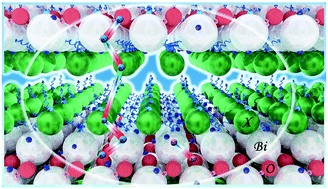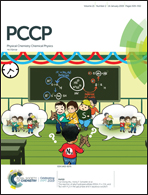Theoretical insights into photo-induced electron transfer at BiOX (X = F, Cl, Br, I) (001) surfaces and interfaces†
Abstract
The electron transfer process (ETP) of a photocatalyst plays a crucial role in clarifying its photoelectrochemical catalytic mechanism. BiOX (X = F, Cl, Br, I) (001) surfaces display excellent photocatalytic performance due to the high separation efficiency of photogenerated electron–hole (e−–h+) pairs in their own efficient internal electric field (IEF). The oxygen vacancies (OVs) on the surfaces could cause a change in localized electronic states, then improve the photocatalytic activity of BiOX. Here, the ETP at BiOX (001) surfaces with and without surface OVs were calculated and investigated using a DMol3 module based on density functional theory (DFT). The results showed that the electron transfer at the BiOX (001) surfaces and interfaces should be like this: firstly, the [–O–Bi–] layer at the interface received the photon energy, which made the electrons on the O atoms preferentially photo-induced to Bi atoms and left photo-induced holes on the interface O atoms. Then, the effective electrons on the interface Bi atoms were diffused to one- or multi- electron reactions, and at the same time, electrons from the bulk were transferred through the path of O → Bi → X → X → Bi → O on BiOX (001) surfaces under the IEF effect to interface O atoms, and consequently, maintain the stable proceeding of the photocatalytic reaction. More importantly, we found that the X atoms indeed played a key role in connecting the non-bonding interlayers of the BiOX nanocrystals and affecting the ETP on BiOX (001) surfaces as electron transmitters. The exploration of the OV introduction on BiOX (001) surfaces suggested that the OV-induced localized electronic states should increase the electron mobility and the charge carrier density to improve the photocatalytic activity of BiOX, especially for BiOCl and BiOBr. Our findings could provide new insight for deeply understanding the transfer and catalytic behaviour of photo-induced electrons at BiOX (001) surfaces and interfaces.



 Please wait while we load your content...
Please wait while we load your content...